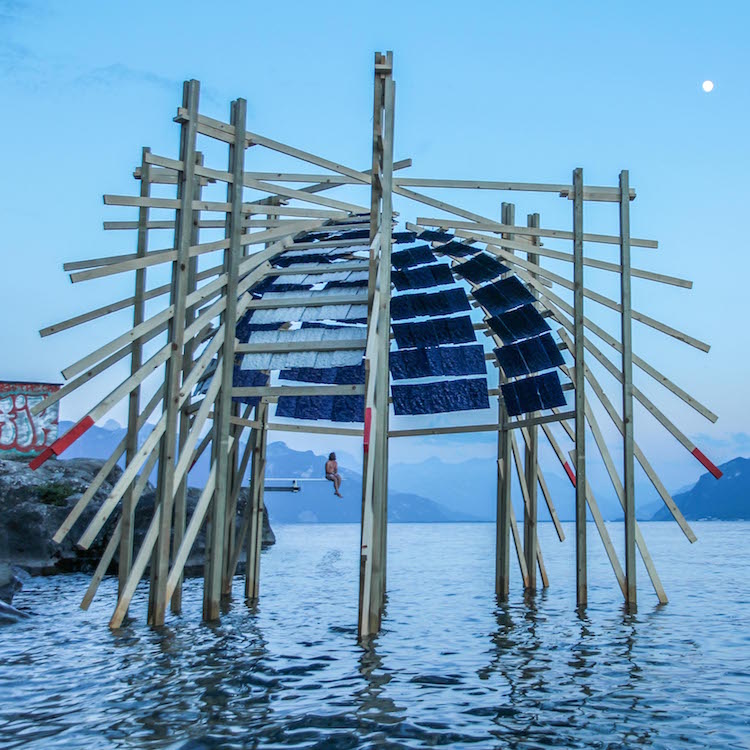LAVAUX, Switzerland—A striking temporary installation of wood and hand-made porcelain tiles, The Pavillon d’Eau stood on the lake’s shore of the UNSECO World Heritage Site of the Lavaux vineyard landscape, a thriving cultural landscape which demonstrates its evolution and development over almost a millennia.
The Lavaux Vineyard Terraces, stretching for about 30 km along the south-facing northern shores of Lake Geneva from the Chateau de Chillon to the eastern outskirts of Lausanne in the Vaud region, cover the lower slopes of the mountainside between the villages and the lake. Although there is some evidence that vines were grown in the area in Roman times, the present vine terraces can be traced back to the 11th century, when Benedictine and Cistercian monasteries controlled the area. It is an outstanding example of a centuries-long interaction between people and their environment, developed to optimize local resources so as to produce a highly valued wine that has always been important to the economy.
Domus writes the project was a collaborative master project between the Ecole Polytechnique Fédérale de Lausanne (EPFL) and the Geneva School of Art and Design (HEAD).
Designed by the EPFL student in Architecture Alexander Wolhoff, the pavilion is the outcome of 6 months of research, of prototyping and of dialogue between the different local and academical actors. The UNESCO World Heritage Site municipality of Saint-Saphorin en Lavaux offered their waters to host the ephemeral pavilion.
Comprised of jetting wooden beams and a dome-shaped compilation of topographic-like blue porcelain panel, the pavillon was designed to highlight the crystalline relief composed of waves and alpine crests and seemed to go even further in adopting the fluid movements in liquid dialogue with the scenery and the lake.
If the exterior of the pavilion has a structural language, the inside, which is only visible by foot in the water, is ornamental. The porcelain tiles in enamelled Bleu de Sèvre and their particular form are an attempt to capture the site’s glare playing with both the sunbeams and lake’s refraction.
Domus adds the project was designed so as to not leave any physical trace of it’s existence at the site.
Do you love or loathe this project from the worlds of contemporary ceramic art and contemporary ceramics? Let us know in the comments.














If it was designed to leave no trace, it’s not going to be very successful. You can clearly see metal fasteners and washers, and fired porcelain is probably one of the least ephemeral man made substances there is. Even if they somehow made degradable fired porcelain, there’s a lot of toxic cobalt in sevres blue enamel.
It is a French work so one must be careful to interpret the language carefully.